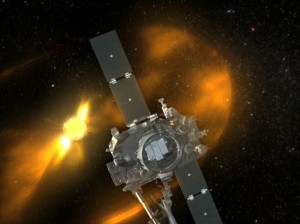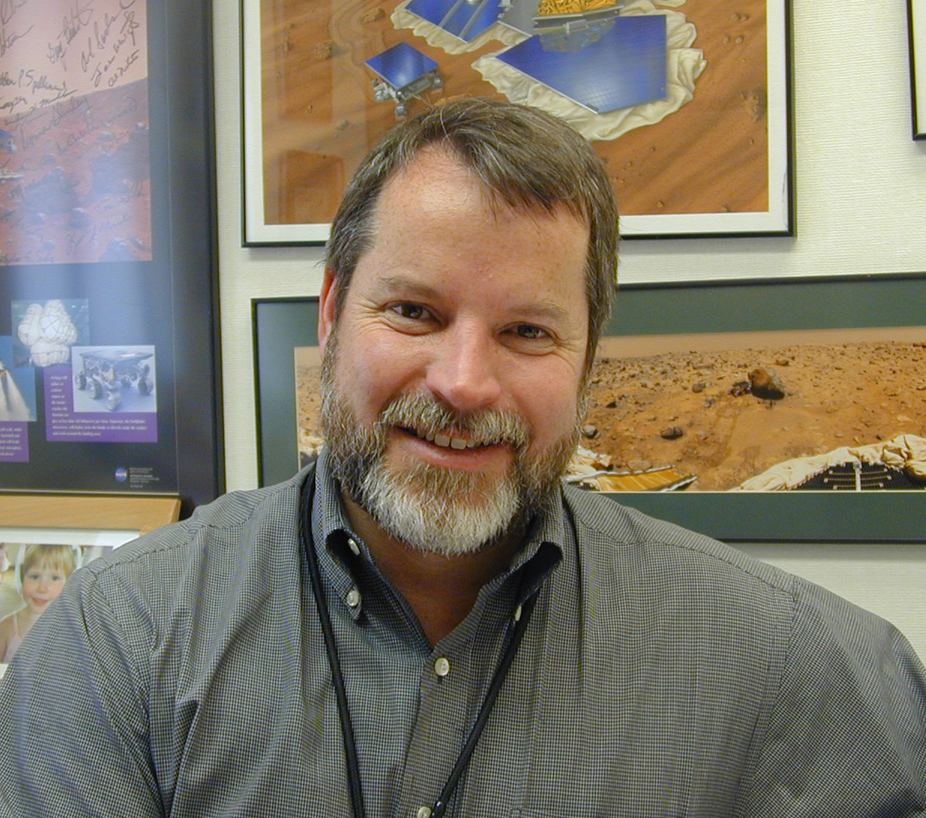
By Rex Geveden
As someone who has worn a lot of hats within NASA, I would be the last person to say that policies and procedures don’t matter. They’re absolutely critical if we’re to do our jobs effectively. But it’s not an accomplishment to put out a procedure or to reorganize. In this agency, there’s only one kind of accomplishment that matters, and that is to carry out NASA’s mission. Of course the mission can take several forms—a space flight, a research activity, a wind tunnel test. The point is that these are all outcome-focused activities, the purpose of which is to satisfy NASA’s mission. They are the reason NASA exists, that Congress appropriates money to us, and that taxpayers support us. Our job is to execute the nation’s civilian aerospace program. Period.

Artist’s concept showing a coronal mass ejection sweeping past STEREO, which is one of NASA’s many recent successful missions
Image Credit: NASA
If you’re not doing the mission or something that supports the mission, then stop what you’re doing and focus your energies on work that does support the mission. This applies to any organization. To take a non-NASA example, I used to get a utility bill that was a postcard in the mail with a perforation so I could mail back one half with my check and put the other half in my records. That was the system for years and years, and it worked fine. For the last several years, though, I’ve received a different kind of utility bill that comes in a bigger envelope. It still contains the card with the perforation, but it also has something else called the utility bill newsletter. I have never read the utility bill newsletter, and I never will. But I’m still paying three cents a month or so to contribute to the production and distribution of that newsletter. The mission of the utility company is to deliver kilowatts of power to my home, not a newsletter that I didn’t ask for and don’t want. In my view, the newsletter is just a distraction from the mission of the utility company.
One of the differences between the NASA of today and yesterday is that we have a much more focused and ambitious mission today than we’ve had in nearly forty years. We’ve been handed a vision with a scale that exceeds our budgets, so we have to use every penny we can possibly find, and we have to partner with international entities, commercial concerns, and others. To make all this happen, we can’t afford to squander any resources on non-mission activities.
In the past couple of years, we’ve made sweeping governance changes, organizational changes, and procedural changes, but those are just a means to an end. They are all about the mission. If we have successful missions and we perform on cost and schedule, then we’ll know that our governance, strategic management, and organizational principles mattered.
What many of these changes have done is put the pendulum back in the middle on the balance between project authority and engineering authority. There was a time when the engineering culture dominated the agency, and project managers had very little real authority. Later, probably starting in the mid-1990s, we developed a project management culture, which was a very positive development except that it took things out of balance. Today the project manager still has clear authority and accountability all the way down a well-defined chain of command. At the same time, however, technical authority now exists independent of that. If you’re an engineer in the field, I think it’s easier to get a technical issue raised by the management, and I think that’s the way it should be.
Based on what we’re seeing so far, those changes are manifesting very positively in mission success. The Flight Readiness Reviews for Space Shuttle flights STS-114, STS-121, and STS-115 were characterized by healthy debate, which of course became publicly known. I think we’re a better agency for it. We worked harder, we thought more deeply about technical issues, and in the end we got the best decisions we could get. And they contributed to mission success.

STS-114 Mission Specialist Wendy Lawrence (right) learns about equipment inside the orbiter Discovery from Reina Winters, an engineer with Johnson Space Center. The Flight Readiness Review for STS-114 involved healthy debate, which led to better decisions for the mission.
Photo Credit: NASA Kennedy Space Center
It’s a sign of health, not illness, for an organization to institutionalize a process for constructive disagreement. Consensus-based management in which decision participants are pressed into agreement reflects, in my opinion, a state of poor health for an organization. If we don’t respect or care about one another enough to disagree honestly and openly, then we’re not healthy. In an unhealthy organization, disagreement creates discomfort, so at times of conflict you will hear things like, “Let’s take that offline.” Or, “We’ll take an action item.” In other words, disagreement is diverted and suppressed. Disagreement—civil, constructive disagreement, not destructive, personal disagreement—brings out the best in us. It causes us to think harder about our positions. It causes us to defend ourselves in a more comprehensive and professional way. And I think it leads to good decisions.
I’m proud of the culture we’re creating within NASA. It’s about accountability, responsibility, and success. It’s a demanding culture, but it’s one in which I think NASA and its partners can thrive and are thriving. It’s a culture about truth, about being straight, about disagreeing when you need to, and about listening to disagreements and adjudicating them fairly. When we talk about technical authority and institutional independence, we’re not just talking about engineering. We’re also talking about a responsibility to be technically great in procurement, for example. If we’re doing something that’s risky or otherwise inadvisable, it’s a procurement responsibility to raise that concern up the chain and challenge the program or project on it. It’s a responsibility to be excellent in law, in accounting. Technical authority is not just about an engineering culture, though engineering is a big part of it.
In the end, it is all about the mission, and none of the organizational or cultural changes will matter if we don’t fly successful missions. Just in the last year, we have flown a number of exceptionally difficult missions—the shuttle and station assembly flights, New Horizons, CloudSat/CALIPSO, STEREO, the Mars Reconnaissance Orbiter, and others. I think we are doing well. We must maintain our mission focus, because this is a hard and risky business, and it will require the best efforts we can offer.







